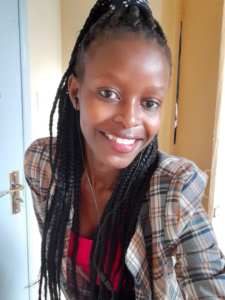Youk Chhang, director of the Documentation Center of Cambodia (DC-CAM) and a survivor of the Khmer Rouge’s killing fields, recently received $6.5 million from the US government via USAID to implement his project titled ‘Advancing the Rights and Improving the Conditions of the Health of Khmer Rouge Survivors’. DC-CAM shares with Khmer Times a recent interview with Chhang on his project.
YOUK CHHANG: First of all, I personally am deeply appreciative of the blessings of the Queen Mother for this effort.
I am grateful for this grant from the US government via USAID in Phnom Penh which will help provide critical support to the survivors of the Khmer Rouge period.
I am sincerely grateful to the Royal Government of Cambodia particularly the Ministry of Interior which has been supporting our work from the very beginning since 1995.
DC-Cam joins the Royal Government of Cambodia in its efforts to address issues related to public health and continue to implement the 3 Protections and 3 Prohibitions which are the main guidelines of Samdech Akka Moha Sena Padei Techo Hun Sen, Prime Minister of Cambodia.
Lastly, I am grateful to H.E Aun Pornmoniroth, Minister of Economy and Finance, for giving preferential tax treatment to the well-equipped mobile health informative minivans that will support some of the actions in this project.
YOUK CHHANG: Why this grant is so unique to me? This grant is unique as it includes a 500-person strong, nationwide volunteer service that will support local survivors in their visits to community health clinics. It gives youth an opportunity to demonstrate leadership and selfless service in support of survivors of the Khmer Rouge and to the Cambodian nation while providing survivors opportunities to share their story of struggle during the Khmer Rouge period with the younger generations to ensure we never forget those years. In short, the programme will highlight our shared humanity and reinforce the resilience of the Cambodian people.
How do you determine who is a survivor?
YOUK CHHANG: Genocide and mass atrocities destroy people’s humanity. DC-Cam wants to restore the humanity of all people: not only victims but also the people who perpetrated horrible acts. DC-Cam will offer support and services to as many people as it can reach based on a belief that the entire Cambodian people that lived during this period of time suffered. From a numbers perspective, there are 5,143,386 genocide survivors (aged 50 and above), which reflects 33.16% of the total population in 196 districts in Cambodia in 2017. There is a rationale for using the age of 50 years old to determine who is a survivor who is eligible for participation in this project. The reason is people who are 50 years of age or older today would have been at least children between 8 to 10 years old when the Khmer Rouge collapsed in 1979.
This generation of people (as well as people born in earlier years) are most likely to remember what happened during this time period and they are the generation that would have the most memories to share with the youth of today.
What would be enough to compensate for what Cambodian people had lost during the Khmer Rouge?
YOUK CHHANG: The tragedy and injustice suffered by the Cambodian people under the Khmer Rouge regime were so great that nothing can truly replace or compensate them; however, this effort is one significant step forward in truly helping and supporting the survivors of genocide. The work will aim to reach not only the most elderly and disabled survivors but also the survivors that live in the most remote communities – far away from any health care clinic. It is justice ‘reimagined’… It is ‘health justice’ for survivors.
What does the grant mean to Cambodia?
YOUK CHHANG: Transitional justice must include more than symbolic reparations; it must include actions that at least aim to improve the well-being of the survivors.
Cambodia could be the first country since the Holocaust in which the survivors of mass atrocities and genocide receive reparations that involve restorative medical care, services, and support from the international community. We should recognise this effort to help the survivors of the Khmer Rouge as an admirable step forward, as well as the beginning of a new conversation on the definition of post-conflict justice.

Youk Chhang (right), director of the DC-CAM, chats with Im Chaem, at Preah Vihear Temple on top of the Dangrek Mountain along the Cambodian-Thai border.
Chaem was a former chief of a district where many lives were lost to execution, starvation, and exhaustion during the regime of the Khmer Rouge (1975-1979). She was charged by the Extraordinary Chambers in the Courts of Cambodia (The Khmer Rouge Tribunal) with responsibility for these crimes. On March 1, 2011, Chaem visited the millennium-years-old Preah Vihear Temple for the first time in her life.
Since the recent dispute with Thailand over the land adjacent to the temple broke out, Chaem and people in her village constantly supply both moral and material support to troops at the frontline. She and people in her village, which is located about 90 kilometres from the temple seriously damaged by the recent fighting, have been united and strong in supporting the fight against what they see as an invasion by Thailand.
Like Chaem, some troops who were stationed at the conflicted area were former Khmer Rouge fighters and some were even sent from her area to reinforce the battle. They appeared to be committed and determined to fight to protect what they believe to be the sovereignty of Cambodia.
Dr John D. Ciorciari, who is teaching international law and politics at the University of Michigan and a senior legal advisor for the DC-CAM and who also joined the visit to the temple, said that, in reconciliation terms, the Thai government has in a sense been doing a favour for the government of Cambodia. According to him, reconciliation to the level never achieved before has arguably been brought about by the recent conflict with Thailand over the land surrounding the Preah Vihear Temple. “The identity of the Khmer Rouge has changed. They seem to have dropped the ‘Rouge’ and now see themselves simply as Khmers, proudly fighting and protecting Cambodia from foreign invasion. The Cambodian government is happy with former Khmer Rouge soldiers protecting the disputed area and the temple and many people are happy having the long-time fighters protecting the temple.”
Text and picture by Chy Terith




